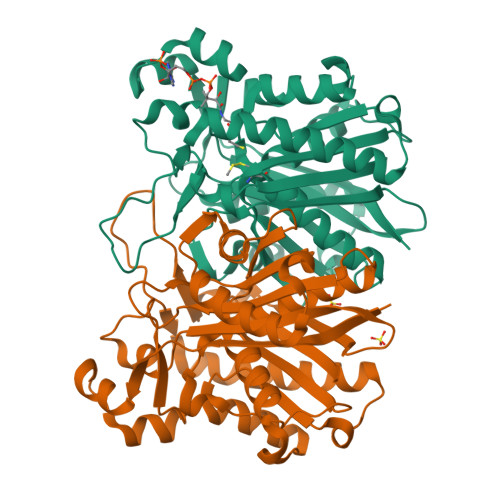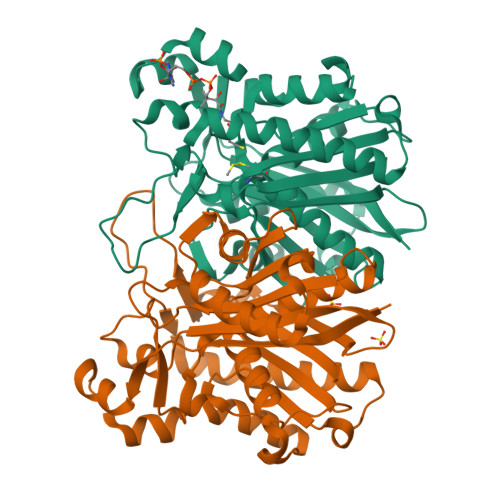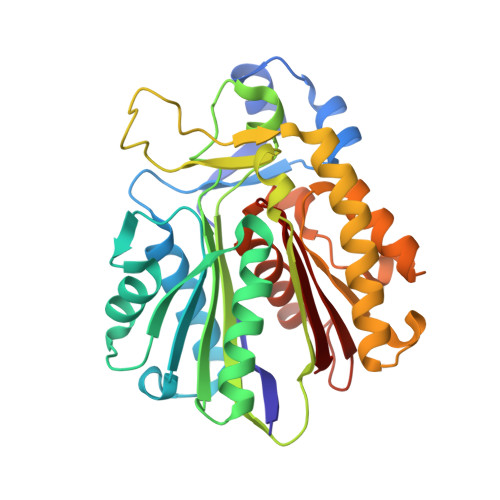Alkyl-CoA Disulfides as Inhibitors and Mechanistic Probes for FabH Enzymes.
Alhamadsheh, M.M., Musayev, F., Komissarov, A.A., Sachdeva, S., Wright, H.T., Scarsdale, N., Florova, G., Reynolds, K.A.(2007) Chem Biol 14: 513-524
- PubMed: 17524982
- DOI: https://doi.org/10.1016/j.chembiol.2007.03.013
- Primary Citation of Related Structures:
2EFT, 2GYO - PubMed Abstract:
The first step of the reaction catalyzed by the homodimeric FabH from a dissociated fatty acid synthase is acyl transfer from acyl-CoA to an active site cysteine. We report that C1 to C10 alkyl-CoA disulfides irreversibly inhibit Escherichia coli FabH (ecFabH) and Mycobacterium tuberculosis FabH with relative efficiencies that reflect these enzymes' differential acyl-group specificity. Crystallographic and kinetic studies with MeSSCoA show rapid inhibition of one monomer of ecFabH through formation of a methyl disulfide conjugate with this cysteine. Reaction of the second subunit with either MeSSCoA or acetyl-CoA is much slower. In the presence of malonyl-ACP, the acylation rate of the second subunit is restored to that of the native ecFabH. These observations suggest a catalytic model in which a structurally disordered apo-ecFabH dimer orders on binding either the first substrate, acetyl-CoA, or the inhibitor MeSSCoA, and is restored to a disordered state on binding of malonyl-ACP.
Organizational Affiliation:
Department of Chemistry, Portland State University, Portland, OR 97207, USA.



















